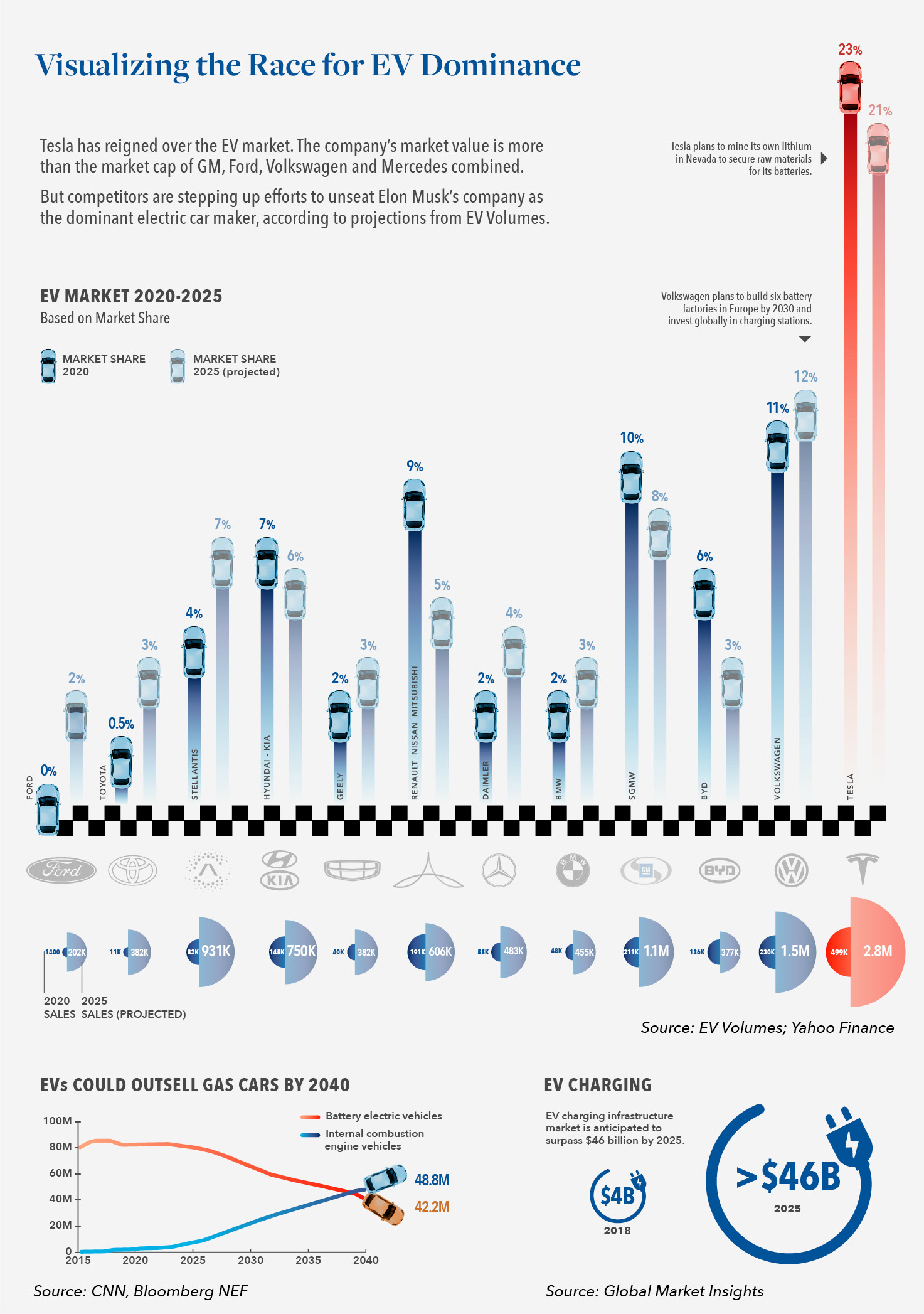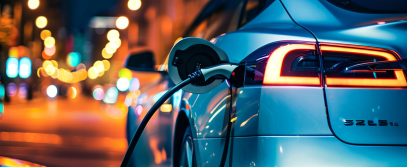The Automotive/EV Landscape and Challenges Facing Industry Suppliers – Part 1

In this first article in our two-part series on the rapid and unpredictable evolution of automotive industry, we address the past and future course of the EV market, the potential ramifications of current UAW negotiations, and primary areas of risk concern moving ahead for automotive suppliers.
Introduction
As this article is being drafted, the United Auto Workers (UAW) strike, which began on September 15th of this year, is now in its 20th day. Although union discussions with Stellantis, Ford and General Motors have been active in recent days, many expect the stalemate to continue for a prolonged period. The UAW is seeking a 40% wage hike over four years (46% compounded), as well as cost-of-living increases, improved retirement benefits, and an abbreviated 32-hour work week. Automakers initially countered with a proposed 10% wage increase and other concessions. Discussions between union leaders and each of the manufacturers are ongoing.
These negotiations hold significant implications for the entire automotive industry, as they will not only ultimately alter the longer term nature of labor wages and benefits, but also stand to impact both the short and long-term course of production volumes and operational dynamics, thereby affecting the financial stability and adaptability of suppliers. Given this uncertainty, as well as the continued progression of EV disruption, now is a time for firms to buckle down on proactively managing risk across a few key areas that are highly indicative of current or future distress including volume, margins, labor, and regulatory matters. OEMs and suppliers, alike, need to be vigilant in addressing these areas, as each poses unique risks and requires proactive strategies to ensure long-term sustainability and competitiveness.
An examination of the realities of the current automotive environment are perhaps best addressed by tracing the path of EV disruption beginning about a decade ago with the start of the transition from purely internal combustion engine vehicles, the proliferation of hybrids and the introduction of pure-play EVs:
2000-2016: The Industry Pioneers
Launched in North America in 2000, the first Toyota Prius featured a 1.5-liter gasoline engine, an electric motor and was one of the first mass-produced hybrid vehicles in the world. A decade later, the all-electric Nissan’s LEAF took to U.S. roads in 2011. While small in size, the LEAF was big on innovation from the start and introduced affordable, electric-only powered mobility to the masses for the first time. That same year, Chevrolet launched its plug-in hybrid Volt. Impressive, combined range and an appealing price tag helped the Bolt endure until its retirement in 2019.
2015-2016: Tesla’s Growing Awareness and Increasing Influence
Having already gained a following and cache with early EV adopters through the rollout and evolution of its Model S sedans, Tesla’s introduction of the Model X SUV and its Autopilot feature in its vehicles during this period highlighted its dedication to not only innovation and luxury but the potential for advanced autonomous driving technology in electric vehicles. The expansion of its Supercharger network and construction plans for Gigafactories further demonstrated the company’s commitment to building an expansive charging infrastructure and scaling up its production capacity. These and other steps during this period served to further distinguishing the company’s offerings from traditional ICE vehicles.
2017-2018: Expanding EV Market and Legislative Support
Several major automakers, including Nissan, Chevrolet, and BMW, introduced affordable long-range electric vehicles during this period, expanding the market beyond luxury segments. Nissan’s Leaf, Chevrolet’s Bolt EV, and BMW’s i3 were notable models among these and others that gained traction and popularity with consumers as more affordable options with somewhat increased range capabilities. Governments worldwide implemented supportive policies and incentives to encourage electric vehicle adoption, such as subsidies, tax incentives, and zero-emission vehicle mandates, driving further growth in the EV market. More strict emission regulations and fuel efficiency standards during this period pushed more automakers to further invest in EV’s toward delivery of cleaner and greener transportation options. At the same time, an increasing charging infrastructure helped to expand EV adoption by addressing consumers range anxiety.

2019-2020: China’s Dominance and Charging Infrastructure Growth
China emerged as the largest electric vehicle market globally during this period, surpassing other countries in terms of sales and adoption. Robust government support, including generous subsidies, favorable regulations, and investments in charging infrastructure, all played a significant role in driving that dominance at the time with automakers such as BYD and NIO gaining prominence and becoming formidable competitors to established international brands, including Tesla. The country’s commitment to building a robust charging infrastructure network led to rapid growth in its number of public charging stations and high-power fast chargers, enhancing the convenience of owning an electric vehicle. During this period, Chinese automakers and companies were also able to expand their presence across international markets, helping to further accelerate the global transition to EVs.
2021: The Rise of Electric SUVs and Policy Shifts
There was a notable rise in both the popularity and availability of electric SUVs in 2021, catering to growing demand for larger, family-oriented electrified vehicles. Ford, Volkswagen, and Audi all introduced electric SUV models, such as the Ford Mustang Mach-E and Volkswagen ID.4, offering consumers more options in the SUV segment.
During this time, several countries also announced plans to ban the sale of new internal combustion engine vehicles by 2030 or 2035, signaling a clear commitment to phasing out fossil fuel-powered cars in favor of electric alternatives. These actions were, in part, the result of perspective gained during the first year of the COVID-19 pandemic which saw dramatically reduced driving and an associated positive impact on the environment. In response to policy shifts, many automakers including General Motors, Volvo and Jaguar Land Rover accelerated their electric vehicle plans and announced ambitious targets for all-electric fleets. These events marked a pivotal moment in the electric vehicle transition, expanding the market reach of EVs and pushing the automotive industry toward a more sustainable and electric future.
2022-Present: Battery Technology Advancements and Market Expansion
Improved battery performance over the past two years has resulted in longer ranges, faster charging times, and enhanced overall performance. This, in turn, has increased the feasibility of owning an EV for many consumers, leading to more widespread adoption. As a result, more major automakers have committed to transitioning their entire vehicle lineups to EV models and already delivered a variety of vehicle choices at price points that are more accessible to a wider range of buyers. This is helping to shift consumer perception of EVs away from the category of a niche luxury transportation indulgence to more of an attainable, intelligent, mainstream choice.
Primary Areas of Risk Concern
The following are critical areas that suppliers and their lenders should be focused on proactively right now given developments in the industry.
- Automakers may adjust production schedules, adopt just-in-time manufacturing, or seek alternative suppliers to mitigate volume-related risks
- Suppliers must be aware of these potential deviations and nimble enough to adapt their operations accordingly to be well prepared for changes in OEM demand

Margins and Financial Sustainability
- The highly competitive nature of the industry has been leading to thinner margins for suppliers
- Automotive suppliers operate in a highly competitive environment with tight profit margins.
- Risks of aggressive pricing and lack of financial sophistication in bidding
- Suppliers may bid aggressively to secure contracts, often underestimating the financial impact of the deal.
- Lack of financial sophistication in bidding processes can lead to unrealistic projections and financial challenges down the line.
- Transition to EV market and the need for expertise in bidding for contracts
- Suppliers must develop distinct expertise to bid effectively and appropriately for EV-related contracts
- Understanding the unique requirements of EV components and accurately pricing bids is essential to ensure financial sustainability.
- Balancing profitability and competitiveness in EV-related projects
- Suppliers must strike a balance between remaining competitive and ensuring adequate profitability in EV-related projects.
- Overcommitting to low-margin contracts has the potential to jeopardize long-term financial stability
- Formal financial metrics warrant close attention
- EBITDA below 6% indicates inadequate cash flow for future profitability. While standard EBITDA margins across the S&P 500 reach around 15%, the manufacturing sector, especially at the middle market level, typically achieves around 10% for a healthy company.
- Evaluating debt to EBITDA ratio provides insights into cash flow, with a ratio exceeding 3.5 to 1 indicating an unfavorable position to repay debt, raising concerns for investors and banks. Similarly, a debt to revenue ratio exceeding 1:2 implies inadequate revenue to support a high debt burden. Lastly, the current ratio, reflecting the ratio of current assets to current liabilities, should not drop below 2:1, indicating an inability to settle immediate liabilities and making suppliers and banks cautious about extending further credit.
- The presence of one or more of the above indicators signifies business struggle, demanding immediate corrective action.
Labor and Potential Strikes
- Power of the United Auto Workers (UAW)
- The auto industry has a very strong union and even if not directly affected by union negotiations and worker strikes, suppliers are still largely at the mercy of the unions and their impact on the OEMs
This is highly relevant in the fall of 2023, as the UAW is engaged in heated negotiations with the “Big 3” American auto makers
- Suppliers must be prepared to navigate the consequences of potential labor disruptions.
- Contingency plans to manage operations during potential strikes or labor negotiations.
- Financial reserves and strategic partnerships can provide stability in times of labor uncertainty.
Regulatory Uncertainty
Trade Regulations:
- Government policies, trade agreements, and environmental regulations can significantly influence the automotive industry and there is presently significant uncertainty around each of these
- Suppliers need to stay informed about changes that can affect their business operations and be proactive and deliberate in the actions they take to address them in a timely manner
- The Trump administration’s renegotiation efforts on NAFTA starting in 2017 (later replaced by the USMCA) and TPP (which the US withdrew from) are good examples. USMCA further increased the percentage of a vehicle’s North American made parts to 75% (from 62.5% in NAFTA) in order to be duty free. Situations like these can cause major ripples across the entire industry and drastically affect suppliers
- Suppliers should also keep in mind that tax credits and incentives for EV manufacturers can notably influence demand for EV components
Climate Change Regulation:
- As the market has already experienced, such regulation, grants and tax breaks can accelerate EV adoption, leading to shifts in OEM production volumes and supplier demands, but changes in political control and resulting policies have the potential to quickly alter that course
- Suppliers must remain nimble and adaptable to align their capabilities with this changing landscape
- The UAW, for example, has been wary of the industry shift to EVs and recently called on the Biden administration to soften its proposed vehicle emission cuts that would require 67% of new vehicles to be electric by 2032.
Addressing Weaknesses and Building Resilience
Given the evolving landscape outlined above, we urge suppliers across the automotive industry to undertake a “health check,” leveraging the independent and unbiased services of a qualified and experienced third party consultant. Closely reviewing financials, operations and identifying potential inefficiencies or problems that may not otherwise be obvious to those within the business, should be considered as a risk mitigation best practice– even if a company is performing well.
Conclusions
Hilco Performance Solutions and Getzler Henrich, both collectively and independently, have recently conducted numerous such heath checks on behalf of a wide range of supplier companies across the automotive and other industries. In addition to aiding those businesses to: 1) better balance leverage and margins in negotiations with OEMs, 2) focus more clearly on financial metrics and performance during the bidding process, 3) further diversify their offerings and expertise to align with the evolving market and, 4) develop a robust strategy to navigate regulatory uncertainties, these efforts have provided our teams with key learnings and insights that we are now able to bring to clients on new engagements as well. With this in mind, and the impacts of the still pending UAW negotiations a continuing uncertainty, we encourage you to reach out to us today. We are here to help.
About Hilco Performance Solutions
At Hilco Performance Solutions, we help companies simplify and streamline business processes and improve operational efficiency, enabling them to remain competitive and gain market share in an increasingly interconnected economy. Leveraging a highly tenured team of cross-functional experts in the areas of operations, supply chain, people, mergers & acquisitions and commercial, we advise clients toward sustainable revenue growth and cost reduction.
About Getzler Henrich & Associates
As a pioneer in the turnaround and restructuring space, we’re tuned in to the objectives and sensitivities of all parties and help companies identify and work toward the best solutions. It is in that context that we provide a full array of turnaround, workout, crisis and interim management, corporate restructuring, bankruptcy, financial advisory and distressed M&A services to publicly held companies, private corporations and family-owned businesses worldwide.




